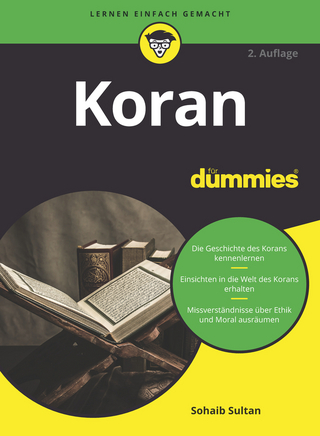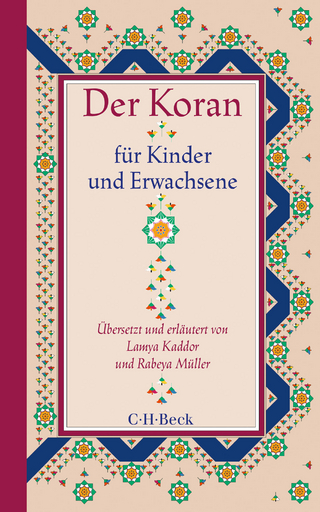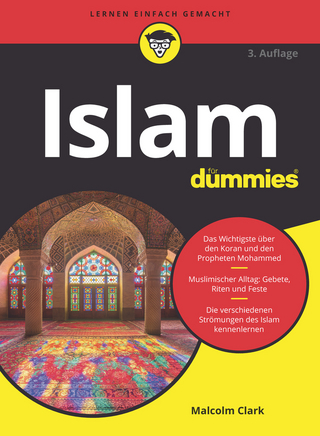
Islamic Culture and Pre-Islamic Beliefs in Central Asia
Lexington Books/Fortress Academic (Verlag)
978-1-6669-6929-0 (ISBN)
Over thousands of years, Central Asia has been a bridge between different religions and cultures. The introduction of Islam in the seventh century CE ushered in an era of social and cultural change to the region, which saw both new beliefs and practices, as well as some pre-Islamic sacred places being transformed into Islamic ones, and the cult of saints absorbing elements of both local and Arab mythology. Islamic Culture and Pre-Islamic Beliefs in Central Asia, a project initiated by the Balkan History Association, focuses on Islamic culture, traditions, and pre-Islamic beliefs in Kazakhstan, Kyrgyzstan, Tajikistan, Turkmenistan, and Uzbekistan. In a broader sense, it promotes the history and culture of Central Asia in Southeast Europe. The chapters emphasize the importance of religious life, the significance of certain “sacred places,” which became major places of worship, and their role in the socio-spiritual life of Central Asian society. Local or “folk” forms of Islam and their historical and cultural background are also discussed. This volume includes research spanning a period from antiquity to the Post-Soviet era to explore how landscapes of religious places and practices were interpreted and reinterpreted through time.
Mihai Dragnea is president of the Balkan History Association and editor-in-chief of Hiperboreea. Dorina Dragnea works in the Department of Intangible Heritage and Traditional Culture of the National Institute of Heritage, Bucharest, Romania. Antonio Alonso Marcos is professor of political science at the Universidad San Pablo CEU, Madrid.
Acknowledgments
Introduction: The Religious Landscapes of Central Asia throughout History
Mihai Dragnea, Dorina Dragnea, Antonio Alonso Marcos, and Elissa Bullion
Soviet Religious Legislation
Chapter 1: Communist Atheism Overrides Islam: The Soviet Movement for Religious Control in Central Asia (1930s-1960s)
Rui Kai Xue
Chapter 2: Interpretation of the "Soviet Past" in Historical Policy Newly Independent States of Central Asia
Viachaslau Menkouski
Chapter 3: Impact of Communal Identity on the Notion of States in Soviet Kyrgyzstan and Uzbekistan
Shambhavi Thite
Political Islam and Islamic Social and Cultural Reformation
Chapter 4: Hizb ut Tahrir (HT) in Central Asia Since 2000: A Political Party, a Terrorist Group or a Social Movement?
Antonio Alonso Marcos
Chapter 5: Islam in Central Asia: Why Jadidism is ‘Out’ and Why Salafism is ‘In’
Dareg Zabarah-Chulak
Pre-Islamic and Early Islamic Material Culture
Chapter 6: Ancient Religions and Beliefs: Pre-Islamic Cult Architecture of the Ancient States of Central Asia
Shoira Nurmukhamedova Zahidovna and Feruzjon Subkhonov Shukhratovich
Chapter 7: Heads or Altars: An Analysis of Religious Culture in Early Islamic Numismatics
Jonathan Ouellet
Sacred Spaces and Religious Mobility
Chapter 8: Islamic Shrines and pilgrimage in Samarkand (1992-2022)
Azim Malikov
Chapter 9: The Impact of the Seven Pir Shrines in the Bukhara Province on the Social-Spiritual Life of the Muslims in Uzbekistan
Fahri Türk and Dolunay Yusuf Baltürk
Language and Ethnic Identity
Chapter 10: The Semantic Analysis of Mythological Conceptual Units in Religious Discourse: A Case Study of the Karakalpak Language
Gulzira Kdirbaeva Kurbanbaevna
Chapter 11: Beliefs of the Semi-Nomadic Turkic-speaking Ethnic Group in Iran, the Qashqais
Venera Mustafayeva
About the Contributors
| Erscheinungsdatum | 30.08.2024 |
|---|---|
| Co-Autor | Mihai Dragnea, Dorina Dragnea |
| Sprache | englisch |
| Maße | 158 x 236 mm |
| Gewicht | 621 g |
| Themenwelt | Geisteswissenschaften ► Religion / Theologie ► Islam |
| Sozialwissenschaften ► Ethnologie | |
| Sozialwissenschaften ► Soziologie | |
| ISBN-10 | 1-6669-6929-X / 166696929X |
| ISBN-13 | 978-1-6669-6929-0 / 9781666969290 |
| Zustand | Neuware |
| Haben Sie eine Frage zum Produkt? |
aus dem Bereich


